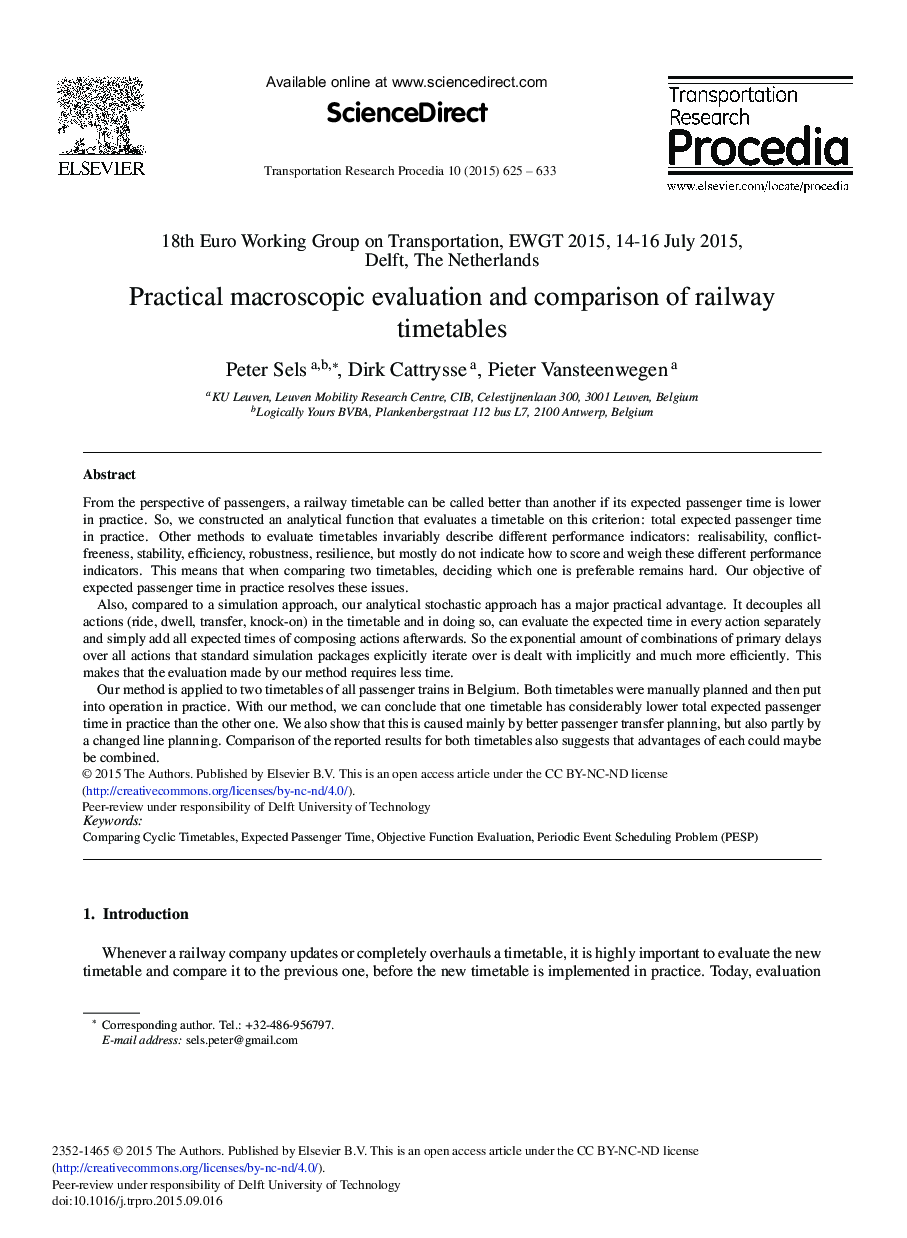| Article ID | Journal | Published Year | Pages | File Type |
|---|---|---|---|---|
| 1106873 | Transportation Research Procedia | 2015 | 9 Pages |
From the perspective of passengers, a railway timetable can be called better than another if its expected passenger time is lower in practice. So, we constructed an analytical function that evaluates a timetable on this criterion: total expected passenger time in practice. Other methods to evaluate timetables invariably describe different performance indicators: realisability, conflict- freeness, stability, efficiency, robustness, resilience, but mostly do not indicate how to score and weigh these different performance indicators. This means that when comparing two timetables, deciding which one is preferable remains hard. Our objective of expected passenger time in practice resolves these issues.Also, compared to a simulation approach, our analytical stochastic approach has a major practical advantage. It decouples all actions (ride, dwell, transfer, knock-on) in the timetable and in doing so, can evaluate the expected time in every action separately and simply add all expected times of composing actions afterwards. So the exponential amount of combinations of primary delays over all actions that standard simulation packages explicitly iterate over is dealt with implicitly and much more efficiently. This makes that the evaluation made by our method requires less time.Our method is applied to two timetables of all passenger trains in Belgium. Both timetables were manually planned and then put into operation in practice. With our method, we can conclude that one timetable has considerably lower total expected passenger time in practice than the other one. We also show that this is caused mainly by better passenger transfer planning, but also partly by a changed line planning. Comparison of the reported results for both timetables also suggests that advantages of each could maybe be combined.
